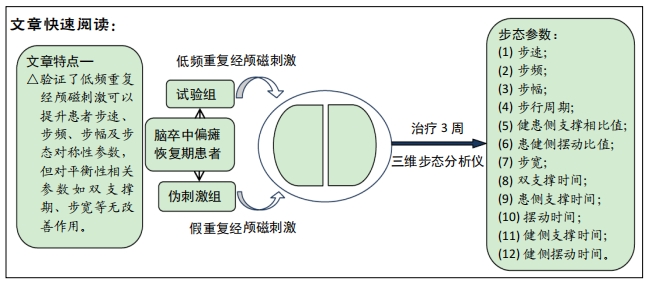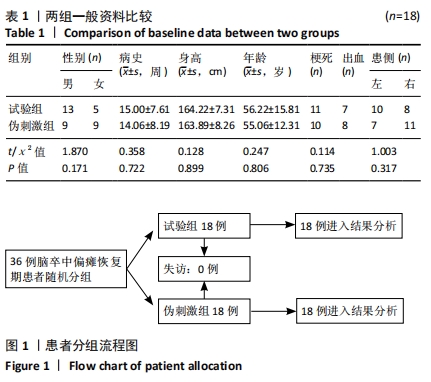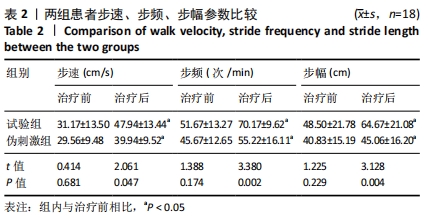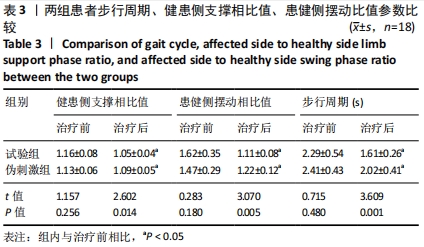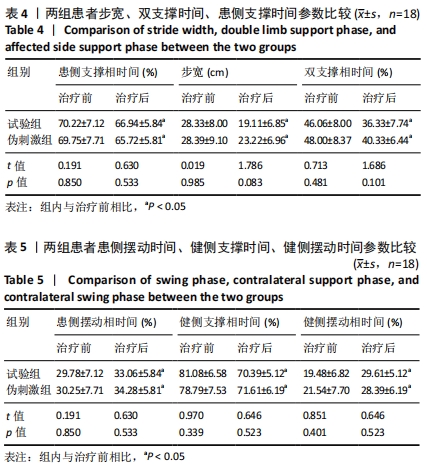[1] SABUT S, SUBUDHI AK, DASH M. Automated segmentation and classification of brain stroke using expectation maximization and random forest classifier. Biocybernetics and Biomedical Engineering, 2019;40(1):277-289.
[2] 孙海欣,王文志.中国 60 万人群脑血管病流行病学抽样调查报告[J].中国现代神经疾病杂志,2018,18(2):83-88.
[3] FEIGIN VL,NGUYEN G, CERCY K, et al. Global, Regional, and Country-Specific Lifetime Risks of Stroke, 1990 and 2016. N Engl J Med. 2018; 379(25):2429-2437.
[4] CHOI PK, CHUNG JY, LEE SJ, et al. Recurrent cerebral microbleeds with acute stroke symptoms: a case report. Medicine (Baltimore). 2018; 97(39):e12480.
[5] SHINDE K, GANVIR S. Effectiveness of trunk proprioceptive neuromus-cular facilitation techniques after stroke: a meta-analysis. Natl JMed Allied Sci. 2014;3(3):29-34.
[6] BARKER AT, JALINOUS R, FREESTON IL. Non-invasive magnetic stimulation of human motor cortex. Lancet. 1985;1(8437):1106-1107.
[7] LIN DJ, FINKLESTEIN SP, CRAMER SC. New directions in treat‐ments targeting stroke recovery. Stroke. 2018;49(12):3107-3114.
[8] LEFAUCHEUR JP, ANDRÉ-OBADIA N, ANTAL A, et al.Evidence-based guidelines on the therapeutic use of repetitive transcranial magnetic stimulation (rTMS). Clin Neurophysiol. 2014;125(11):2150-2206.
[9] LONG H, WANG H, ZHAO C, et al. Effects of combining high and low-frequency repetitive transcranial magnetic stimulation on upper limb hemiparesis in the early phase of stroke. Restor Neurol Neurosci. 2018; 36(1):21-30.
[10] 周哲,沈夏锋,熊莉,等.运动前区高频重复经颅磁刺激对脑卒中上肢功能康复的疗效[J].中国康复理论与实践,2020,26(6):697-702.
[11] 刘阅,王晓阳,张长龙,等.低频重复经颅磁刺激改善脑卒中后上肢痉挛的任务态功能磁共振研究[J].中国康复理论与实践,2018, 24(7): 828-833.
[12] SCHULZE L, WHEELER S, MCANDREWS MP, et al. Cognitive safety of dorsomedial prefrontal repetitive transcranial magnetic stimulation in major depression. Eur Neuropsychopharmacol. 2016;26(7): 1213-1226.
[13] 中华医学会神经病学分会,中华医学会神经病学分会脑血管病学组.中国各类主要脑血管病诊断要点2019[J].中华神经科杂志,2019, 52(9):710-715.
[14] WASSERMANN EM. Risk and safety of repetitive transcranial magnetic stimulation: report and suggested guidelines from the international workshop on the safety of repetitive transcranial magnetic stimulation.Electroencephalogr Clin Neurophysiol. 1998;108(1):1-16.
[15] 郭燕婷,范魏魏,张海峰.髋周平衡取穴对缺血性卒中后偏瘫步态的影响[J].新中医,2020,52(4):135-138.
[16] 陈党红,黄培新.脑卒中后肌张力增高的基础及中西医临床研究现状[J].中国临床康复,2004(16):3096-3098.
[17] 胡菱,赵冬琰.中风后痉挛性偏瘫中西医研究进展[J]. 中西医结合心脑血管病杂志,2016,14(7):729-733.
[18] LEFAUCHEUR JP, ALEMAN A, BAEKEN C, et al. Evidence-based guidelines on the therapeutic use of repetitive transcranial magnetic stimulation (rTMS): An update (2014–2018). Clin Neurophysiol. 2020;131(2): 474-528.
[19] CHUNG CL, MAK MK. Effect of Repetitive Transcranial Magnetic Stimulation on Physical Function and Motor Signs in Parkinson’s Disease: A Systematic Review and Meta-Analysis. Brain Stimul. 2016; 9(4):475-487.
[20] LATORRE A, ROCCHI L, BERARDELLI A, et al. The use of transcranial magnetic stimulation as a treatment for movement disorders: A critical review. Mov Disord. 2019;34(6):769-782.
[21] VOLZ LJ, GREFKES C. Basic principles of rTMS in motor recovery after stroke//Platz T. Therapeutic rTMS in Neurology. Cham: Springer. 2016: 23-37.
[22] PASCUALLEONE A, AMEDI A, FREGNI F, et al. The plastic human brain cortex. Ann Rev Neurosci. 2005;28(28):377.
[23] MAEDA F, KEENAN JP, TORMOS JM, et al. Modulation of corticospinal excitability by repetitive transcranial magnetic stimulation. Clin Neurophysiol. 2000;111(5):800-805.
[24] 万青,吴伟,刘慧华,等.脑卒中患者偏瘫步态的时空及关节运动学参数分析[J].中国康复医学杂志,2014,29(11):1026-1030.
[25] 励建安,孟殿怀.步态分析的临床应用[J].中华物理医学与康复杂志,2006,28(7):500-503.
[26] YANG DJ, PARK SK, KANG JI, et al. Effects of changes in posturalalignment on foot pressure and balance of patients with stroke. J Korean Phys Ther. 2014;26.
[27] 娄必丹,章薇,刘智,等.张力平衡针法改善脑卒中痉挛瘫痪患者残损功能的临床评价[J].中国针灸,2010,30(2):89-92.
[28] VAZ PG, SALAZAR APDS, STEIN C, et al. Noninvasive brain stimulation combined with other therapies improves gait speed after stroke: a systematic review and meta-analysis. Top Stroke Rehabil. 2019;26(3): 201-213.
[29] XIE YJ, CHEN Y, TAN HX, et al. Repetitive transcranial magnetic stimulation for lower extremity motor function in patients with stroke: a systematic review and network meta-analysis. Neural Regen Res. 2021;16(6):1168-1176.
[30] LI Y, FAN J, YANG J, et al. Effects of Repetitive Transcranial Magnetic Stimulation on Walking and Balance Function after Stroke: A Systematic Review and Meta-Analysis. Am J Phys Med Rehabil. 2018;97(11): 773-781.
[31] WANG RY, WANG FY, HUANG SF, et al. High-frequency repetitive transcranial magnetic stimulation enhanced treadmill training effects on gait performance in individuals with chronic stroke: A double-blinded randomized controlled pilot trial. Gait Posture. 2019;68: 382-387.
[32] PUNDIK S, MCCABE J, SKELLY M, et al. Association of spasticityand motor dysfunction in chronic stroke. Ann Phys Rehabil Med. 2019; 62(6):397-402.
[33] Rastgoo M, Naghdi S, Nakhostin Ansari N, et al. Effects of repetitive transcranial magnetic stimulation on lower extremity spasticity and motor function in stroke patients. Disabil Rehabil. 2016; 38(19):1918-1926.
[34] Naghdi S, Ansari NN, Rastgoo M, et al. A pilot study on the effects of low frequency repetitive transcranial magnetic stimulation on lower extremity spasticity and motor neuron excitability in patients after stroke. J Bodyw Mov Ther. 2015;19(4):616-623.
[35] Rodacki AL,Souza RM,Ugrinowitsch C,et al.Transient effects of stretching exercises on gait parameters of elderly women. Man Ther. 2009;14(2):167-172.
[36] Lindow J, Domin M, Grothe M, et al. Connectivity-based Predictions of Hand Motor Outcome for Patients at the Subacute Stage after Stroke. Klin Neurophysiol. 2016;47(2):103-105.
[37] Boddington LJ, Reynolds JNJ. Targeting interhemispheric inhibition with neuromodulation to enhance stroke rehabilitation. Brain Stimul. 2017;10(2):214-222.
[38] Rehme AK, Eickhoff SB, Wang LE, et al. Dynamic causal modeling of cortical activity from the acute to the chronic stage after stroke.Neuroimage. 2011;55(3):1147-1158.
[39] Ueda R, Yamada N, Abo M, et al. MRI evaluation of motor function recovery by rTMS and intensive occupational therapy and changes in the activity of motor cortex. Int J Neurosci. 2020;130(3):309-317.
|
